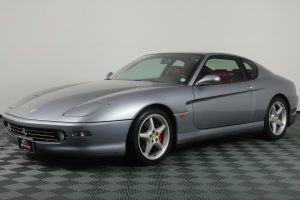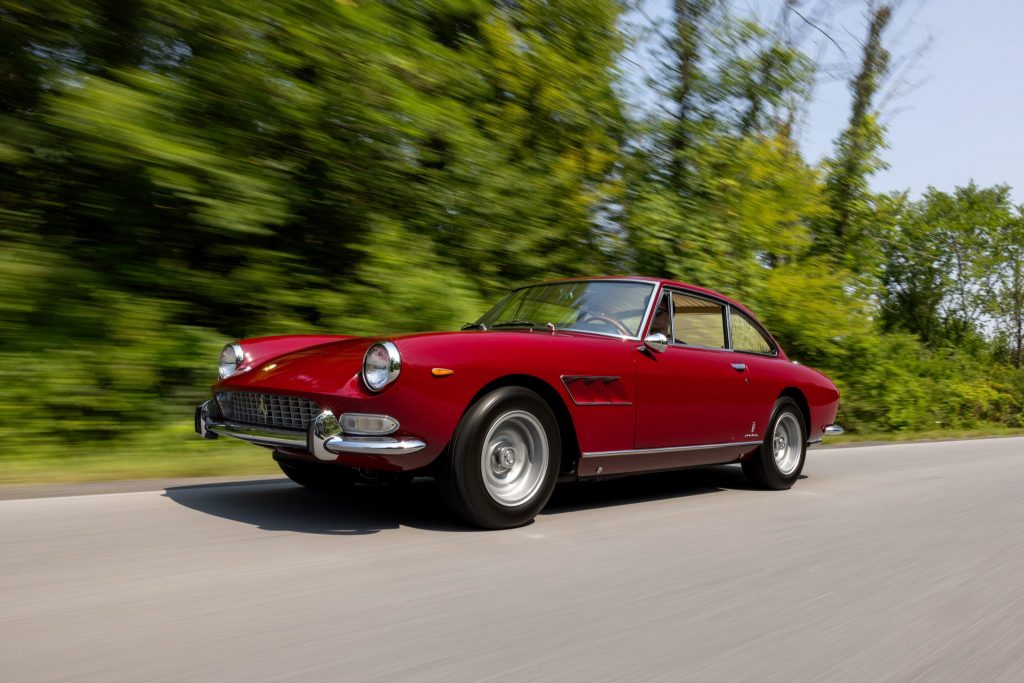
Current Price: USD $250,000 – Source
Auction Ends: Friday, August 22 at 10:15am PT
–
This 1966 Ferrari 330 GT is one of 455 Series II examples produced between 1965 and 1967 and was sold new via Luigi Chinetti Motors in New York to its first owner in Memphis, Tennessee, in August 1966. Chassis 8627 spent time in Texas and Minnesota before being sold in 1999 to an owner in California, where it received refurbishment work through the early 2000s that included a repaint in Rosso Rubino and a refresh of the cream leather interior. The car is said to have subsequently won a Gold award at the 2005 Concorso Italiano, where it earned Platinum awards the following three years along with Platinum awards at the 2007 and 2008 Bella Italia car show. It was issued Ferrari Classiche certification in 2010 and later appeared at the 2017 Cavallino Classic and Amelia Island Concours d’Elegance. Power is provided by a 4.0-liter Colombo V12 that was overhauled in 2013 and breathes through triple Weber carburetors. Additional features include a five-speed manual transmission, a limited-slip differential, servo-assisted four-wheel disc brakes, coil-spring suspension with telescopic shock absorbers, and 15” Campagnolo center-lock wheels. This 330 GT 2+2 was purchased by the selling dealer approximately one month ago and is now offered in North Salem, New York, with a Ferrari Classiche Red Book, a history report, 2013 invoices, a tool kit, owner’s manuals, a set of removed red floor mats, and a clean Montana title.
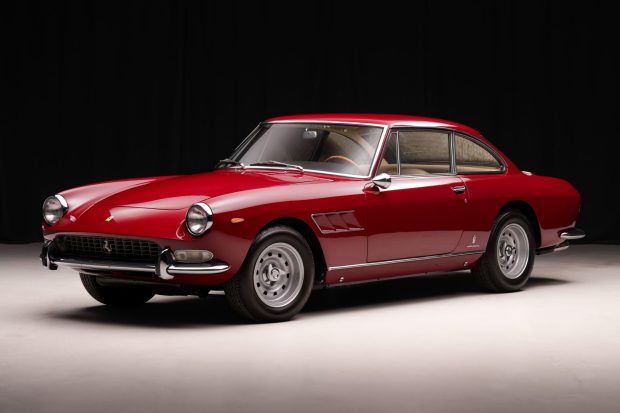
The 330 GT was designed as a longer-wheelbase successor to the 330 America and debuted at the Brussels Motor Show in January 1964 with Pininfarina styling featuring a rounded rear profile with wraparound taillight assemblies and a quad-headlight front fascia. Revisions for the model’s second series in 1965 included single headlights, three-louver fender vents, and bumpers with rubber-lined overriders.
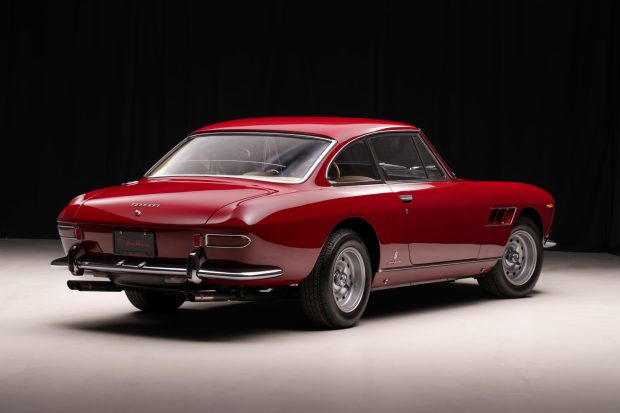
This example left the factory finished in red and underwent a repaint in Rosso Rubino circa 1998. Various imperfections in the finish are shown up close in the photo gallery below, as are images of paint-meter readings. Features include a driver-side mirror, front and rear quarter vent windows, and quad ANSA exhaust outlets.
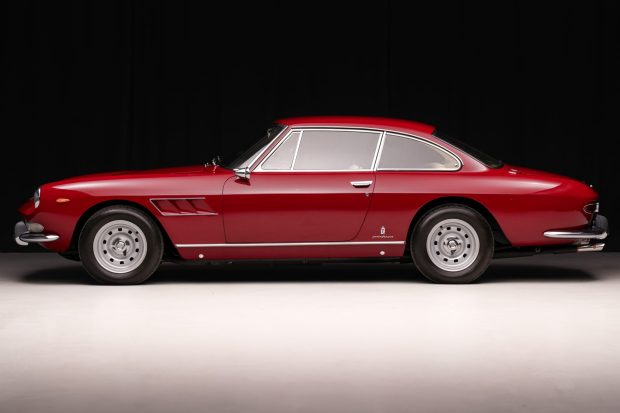
Campagnolo alloy wheels are secured by three-eared knock-offs and are wrapped in 205/70R15 Pirelli Cinturato H6 tires, while a matching spare housed in the trunk wears Michelin X rubber. Stopping is handled by servo-assisted disc brakes with a dual-circuit master cylinder and a single Dunlop booster.
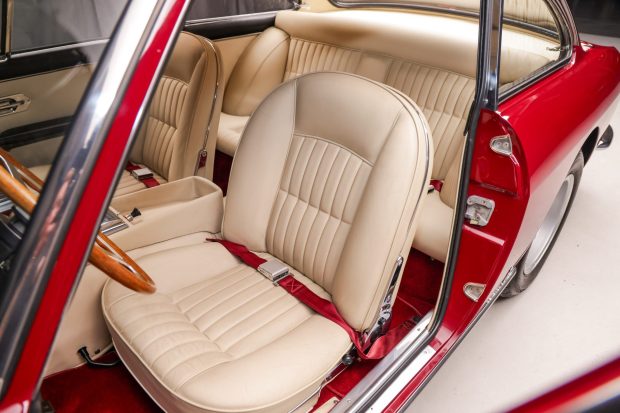
The cabin is trimmed in cream leather over the 2+2 seating, console, and door panels and underwent an interior refresh by Ocean Beach Upholstery in San Diego, California, in 2004. Additional features include red carpeting, red lap belts, a Pininfarina-branded ashtray, wood-trimmed dashboard fascia housing a lockable glovebox, a handbrake lever with an engagement warning light, hanging pedals, and power windows.
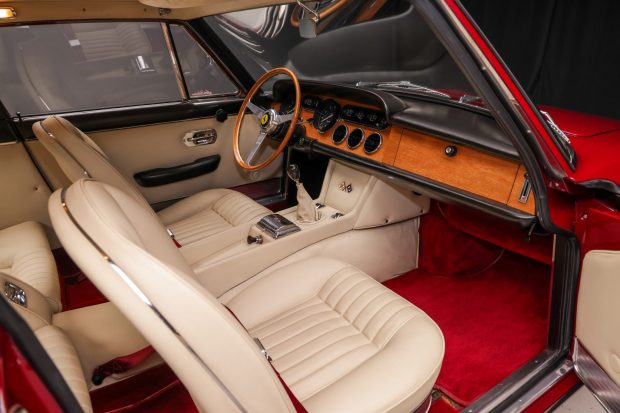
The wood-rimmed steering wheel was refinished in the early 2000s and sits ahead of Veglia instrumentation including a 180-mph speedometer, an 8k-rpm tachometer, and gauges monitoring oil temperature and oil pressure. The five-digit odometer shows 54k miles, approximately 20 of which have been added under current ownership. A quartet of instruments to the driver’s right includes a clock and gauges monitoring coolant temperature, amperage, and fuel level.
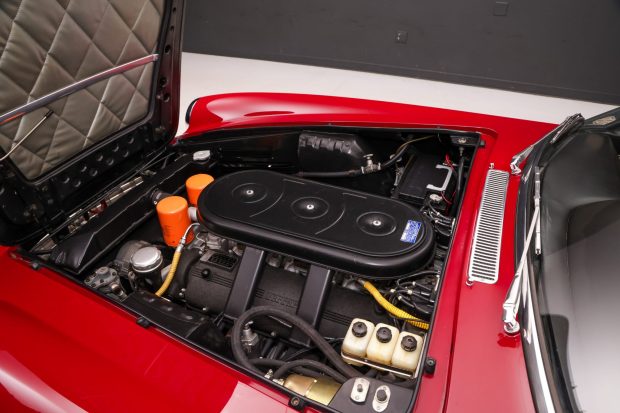
The 4.0-liter Colombo Tipo 209 V12 breathes through triple Weber carburetors and was factory rated at 300 horsepower. The engine was overhauled by Dugan Enterprises in 2013 with work including honing and line-boring of the block, surfacing of the cylinder heads, and replacement of the pistons, bearings, exhaust valves, and valve guides, seats, and seals.
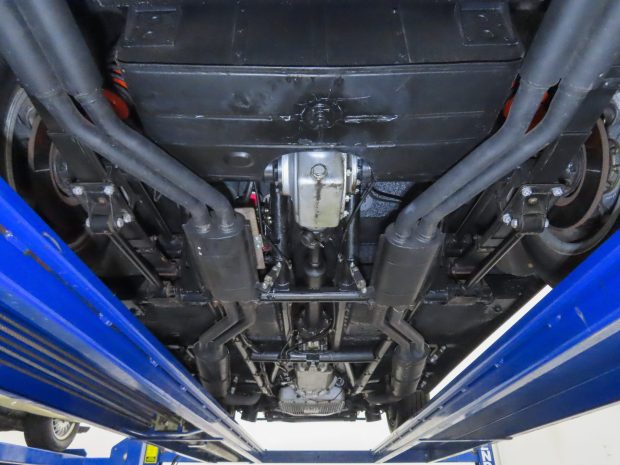
Power is sent to the rear wheels via an all-synchromesh five-speed manual transmission and a limited-slip differential. The transmission was resealed during the 2013 work, which also included surfacing of the flywheel and a rebuild of the clutch. Suspension incorporates an independent front setup and a leaf-sprung solid-axle rear end, with coil springs and telescopic shock absorbers at all four corners. A stainless-steel exhaust system was installed in 1999.
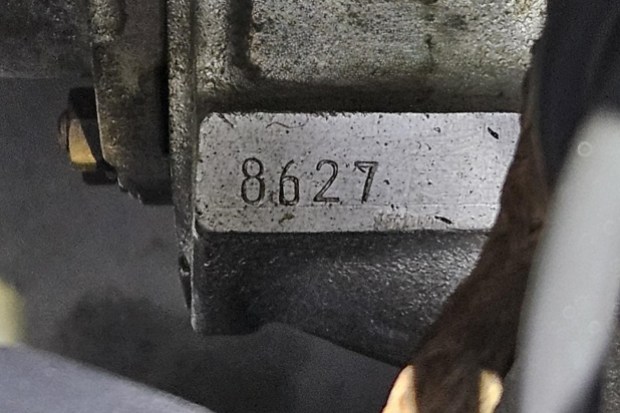
Chassis number 8627 is shown stamped on the engine block above.
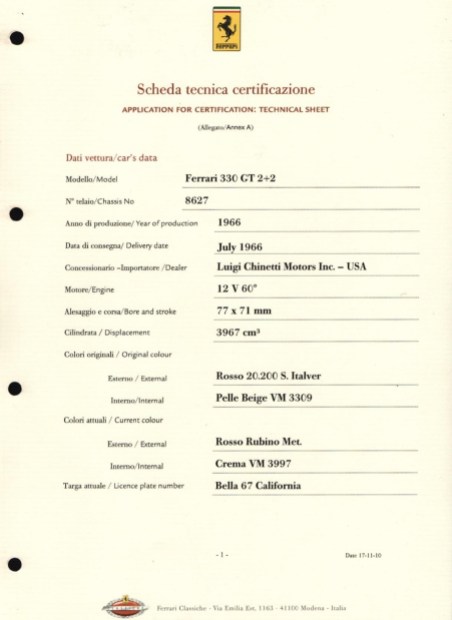
The Ferrari Classiche scheda tecnica certificazione lists the original colors as well as delivery to Luigi Chinetti Motors in July 1966. Additional pages of the Classiche Red Book, which is dated November 2010, are shown in the photo gallery below and include images of stamps of internal engine number 1714, transmission number 93/66, and differential number 49571.
